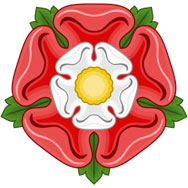Wheelbarrow with Roses
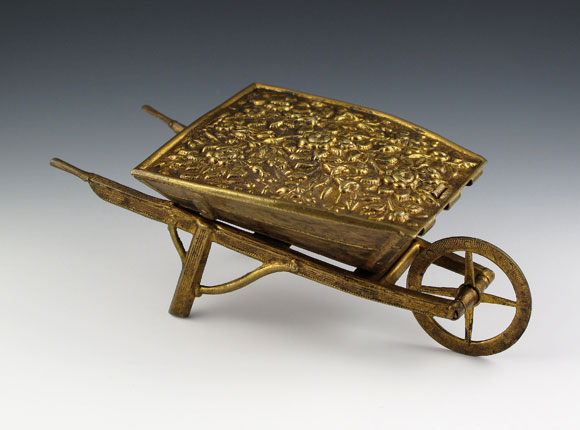
Needle Case
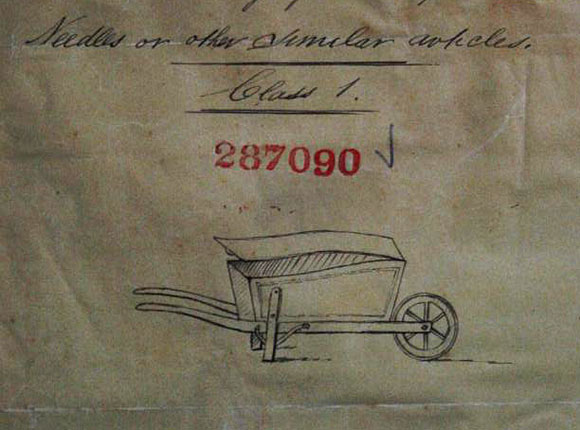
Design Representation
Design Details
Needle Case Type: |
Figural (diamond registration mark on needle case matches design)
|
Patent/Registered to: |
Buncher & Haseler - Birmingham |
Patent/Design Representation #: |
Ornamental Class1: Metal: #287090 |
Patent/Design Registration Date: |
November 18, 1874 |
Location of Patent/Design Registration: |
The National Archives (TNA) - Kew, UK |
Reference #: |
TNA Representation - BT 43/37/287090
TNA Register - BT 44/3/287090 |
Dimensions: |
4.6 x 9.5 x 3.5 |
Material: |
Brass |
Name Variations: |
a) W. Avery & Son - Redditch
b) Asser & Sherwin - London
c) Unmarked (the sole source of this information is Horowitz and Mann as no example of this needle case
with this company name has been seen by the authors of this website) |
Other Variations: |
Wheelbarrow with Holly |
Additional Photographs
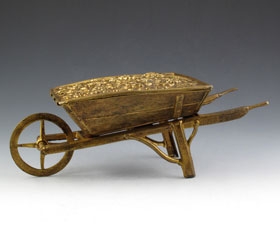
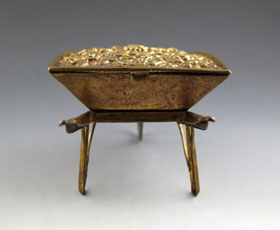
Side and back clasp views
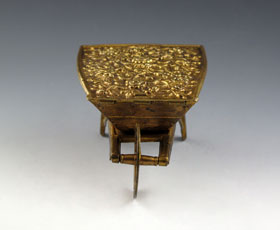
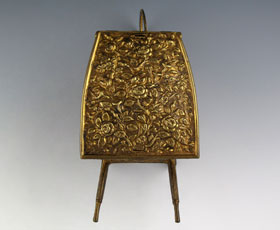
Front hinge and top views
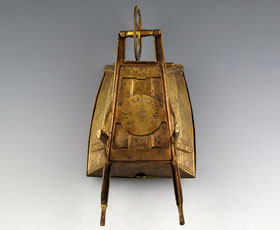
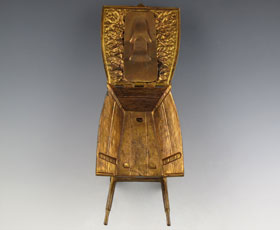
Bottom and interior views
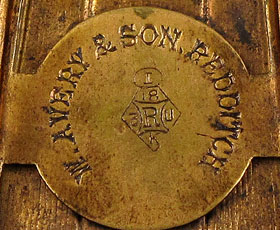
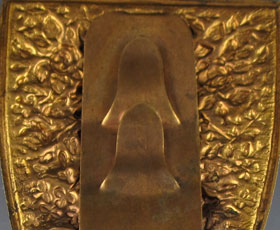
Bottom Avery signature detail and detailed interior view
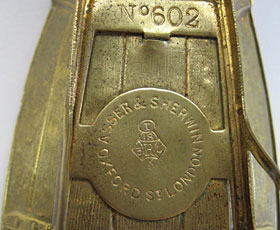
Bottom Asser signature detail (photograph courtesy of Patricia Caras)
Facts
The rose is a woody perennial that comes in hundreds of different varieties. Although the flowers differ in size and shape, they are
usually large and fragrant and found atop stems with thorns. They range in color from white to yellow to red. The ancient Greeks
identified the rose with Aphrodite, the goddess of love.

History
During the early 19th century European botanists began experimenting with different rose species leading to the development of hybrid roses
which produced large flowers in vibrant colors on long stems These hybrid tea roses became the standard rose in fashionably Victorian
gardens and lead to the introduction of the formal Victorian rose garden. The Rose Garden at the Royal Botanic Gardens in Kew (seen below)
was recently restored to reflect its original 1848 design.

Miscellaneous
The Tutor Rose was introduced in 1495 at the end of the English civil war in which the heraldic symbols of the two major rivals were white
and reds roses. After the hostiles ended Henry VII combined the two into a single rose to use as the symbol of English unity. The
conflict later became known as the War of the Roses. Today the rose is the national flower of England.
